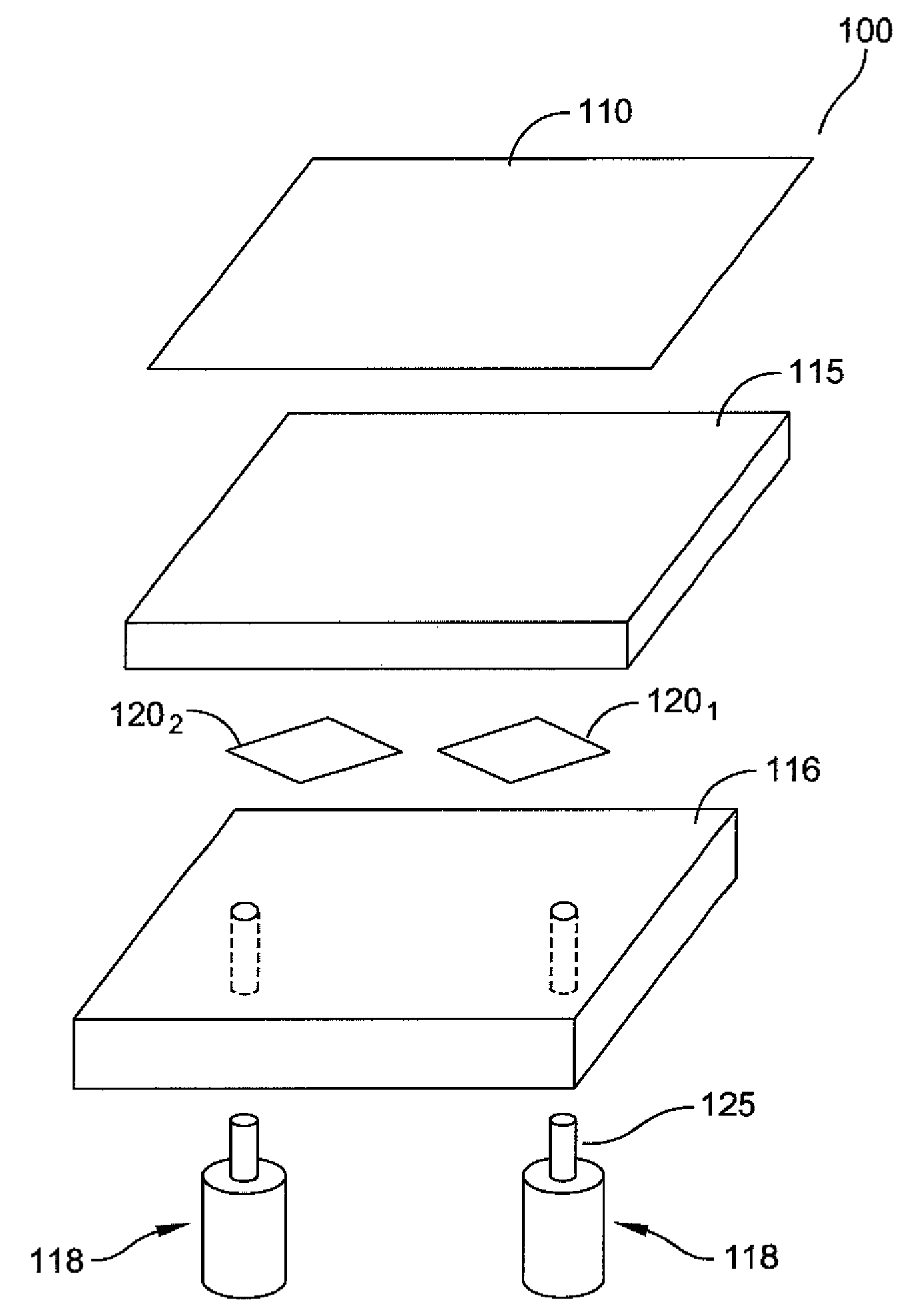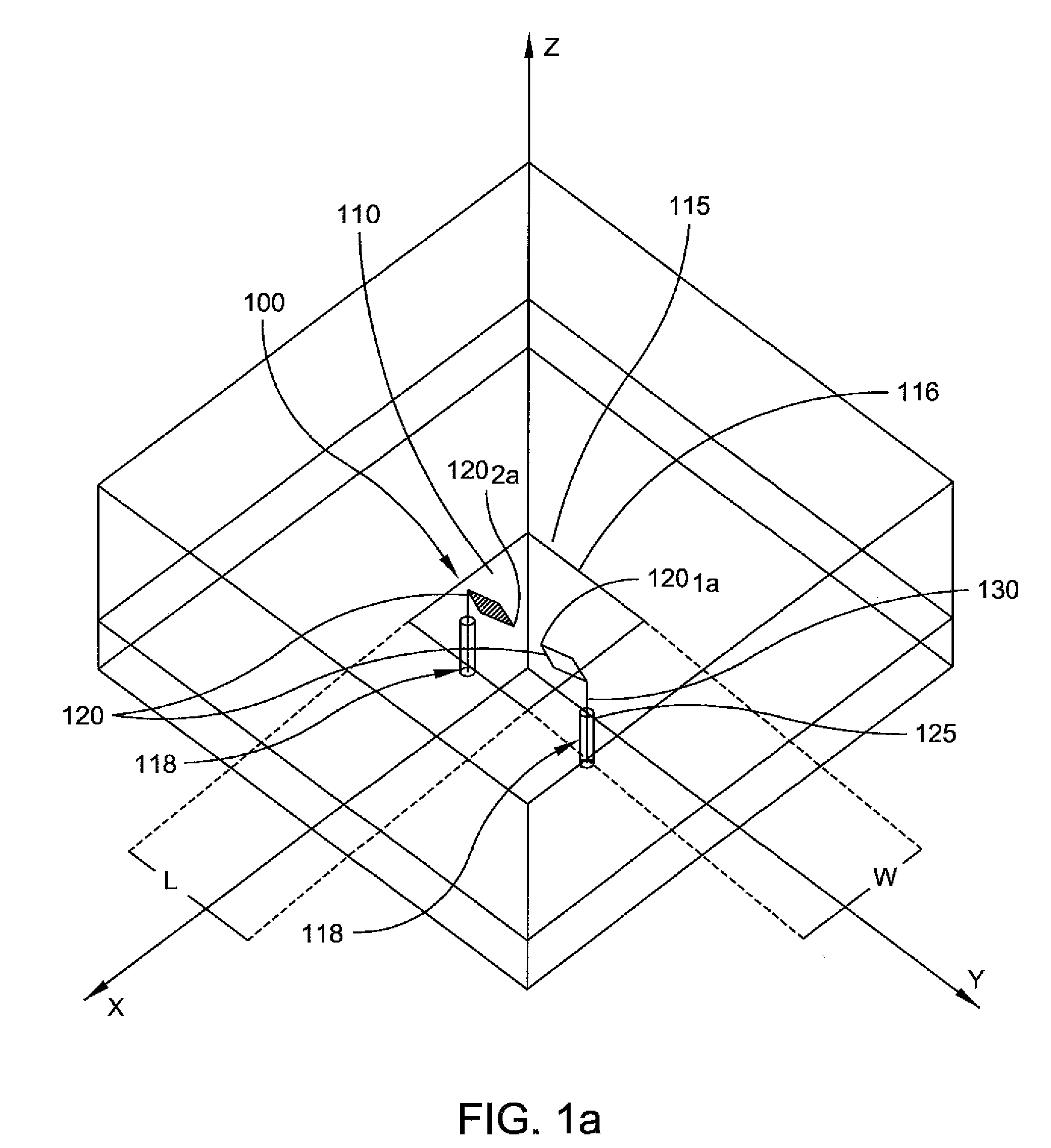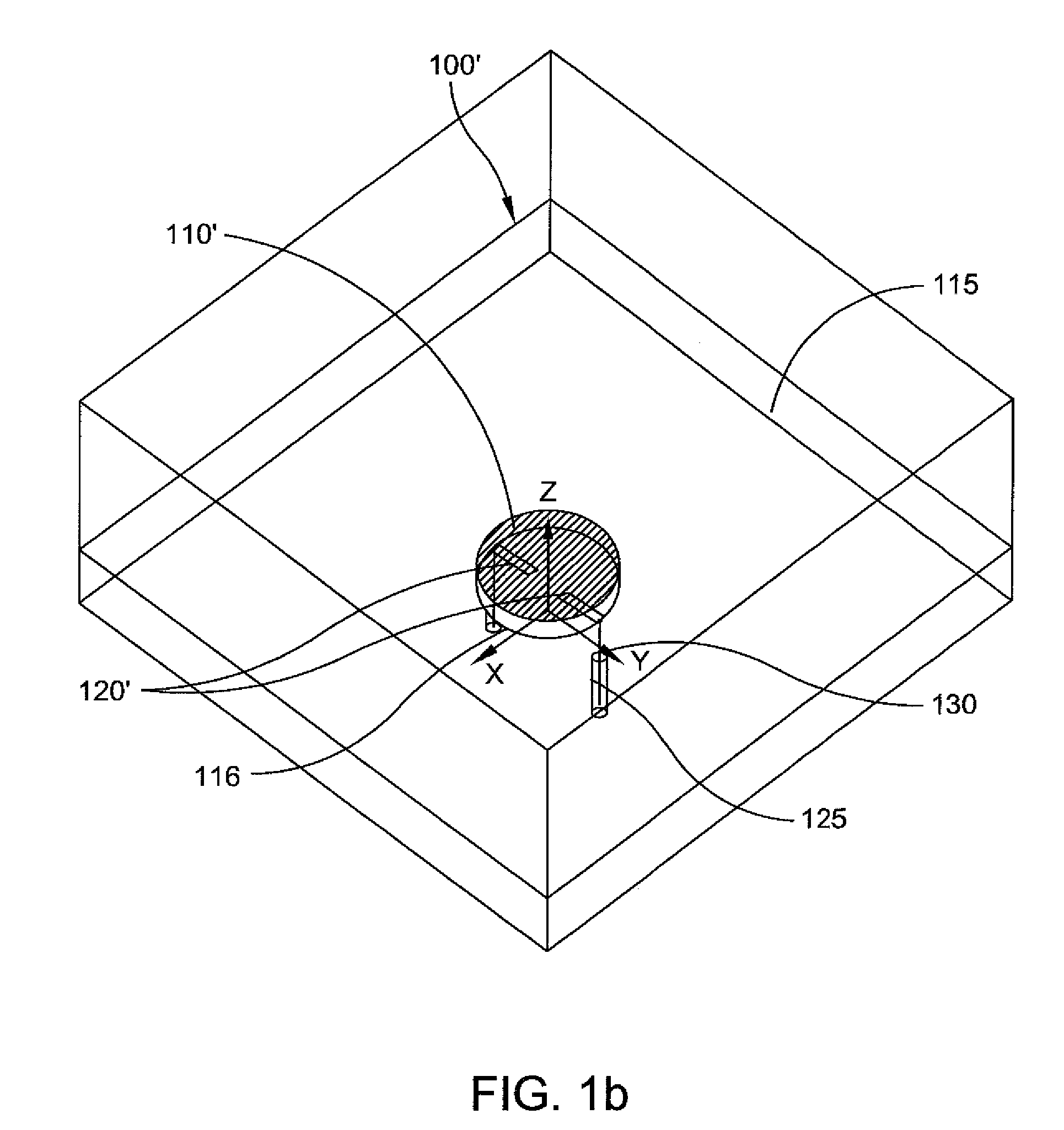Wideband strip fed patch antenna
a patch antenna and wideband strip technology, applied in the direction of elongated active element feed, resonant antenna, radiating element structure, etc., can solve the problems of affecting the bandwidth, affecting the scan angle and cross polarization, disadvantageously increasing the size of the antenna, etc., to reduce cross polarized radiation, wideband antenna operation, and improved bandwidth
- Summary
- Abstract
- Description
- Claims
- Application Information
AI Technical Summary
Benefits of technology
Problems solved by technology
Method used
Image
Examples
Embodiment Construction
[0028]The following description of the preferred embodiments is merely by way of example and is in no way intended to limit the invention, its applications, or uses.
[0029]As shown in FIG. 1a, one embodiment of the invention relates to a microstrip patch antenna 100 that includes a patch antenna element comprising a conductive layer 110 and a pair of dual probe feeds 118 separate from one another and spaced from and field coupled to patch antenna element conductive layer 110 for transmitting or receiving RF signals. Each of the probe feeds 118 includes a vertically extending conductor segment 125 and a deltoid shaped conductive strip 120 orthogonal to the conductor segment 125. The deltoid shaped conductive strips (labeled generally as 120) are coplanar. A first dielectric layer 115 separates antenna element conductive layer 110 and the coplanar deltoid shaped conductive strips 120. As shown, each of the deltoid shaped conductive strips have their major surfaces extending toward one ...
PUM
 Login to View More
Login to View More Abstract
Description
Claims
Application Information
 Login to View More
Login to View More - R&D
- Intellectual Property
- Life Sciences
- Materials
- Tech Scout
- Unparalleled Data Quality
- Higher Quality Content
- 60% Fewer Hallucinations
Browse by: Latest US Patents, China's latest patents, Technical Efficacy Thesaurus, Application Domain, Technology Topic, Popular Technical Reports.
© 2025 PatSnap. All rights reserved.Legal|Privacy policy|Modern Slavery Act Transparency Statement|Sitemap|About US| Contact US: help@patsnap.com



